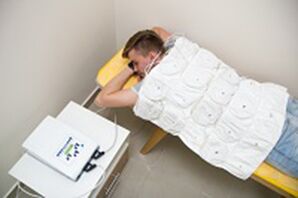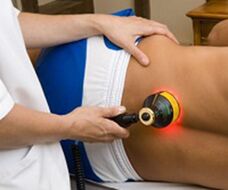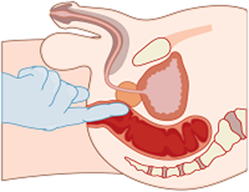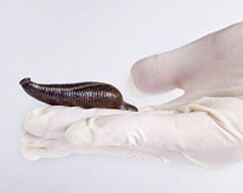Prostatitis is a common and dangerous disease that occurs with inflammation in the prostate gland. Most often, the disease develops due to impaired blood circulation or infection. According to medical statistics, prostatitis in recent years is increasingly diagnosed in men of working age. The disease is accompanied by painful sensations of ejaculation and ejaculation. The symptoms of the disease adversely affect the quality of life for men. Prostatitis is very dangerous with its consequences. Without timely treatment, the disease turns into a chronic stage, which is difficult to treat. Prostatitis requires complex treatment. Consider effective treatments for prostatitis.
Basic treatments

If unpleasant symptoms of the disease appear, men should immediately consult a doctor for timely diagnosis. Based on the examination results, the doctor prescribes treatment.
In this case, the doctor takes into account the following factors:
- degree and form of the disease;
- presence of complications;
- duration of the course of the disease;
- Personal characteristics.
Remember that only complex treatment can help with prostatitis. Therefore, it is important to strictly adhere to all of your doctor's prescriptions and recommendations.
The goal of prostatitis therapy is to reduce inflammation in the prostate gland.
All the treatments used to fight the disease are divided into conservation and activity.
Conservative approaches include:
- drug treatment;
- taking vitamin complexes and means to normalize the immune system;
- physical therapy;
- physical therapy exercises;
- Massage;
- Spa therapy;
- hirudotherapy;
- mud therapy;
- traditional healing methods.
Surgery is indicated in advanced situations where scar tissue has already formed on the gland and is unable to perform its daily functions. During surgery, as a rule, the affected tissues are removed.
Drug treatment
Treatments for prostatitis include taking antibiotics, alpha blockers, pain relievers, and other medications. Consider more effective modern means for the treatment of prostatitis.
Antibiotic therapy
Prostatitis is usually caused by bacteria in nature. Therefore, the doctor prescribes antibacterial drugs for treatment. This group of drugs is effective in treating acute and chronic prostatitis. The pharmaceutical industry offers a variety of antibacterial drugs to help fight the disease.
As a rule, the doctor prescribes the following groups of antibiotics for the treatment:
- Fluoroquinolon.
- Aminoglycoside.
- Tetracyclines.
- Cephalosporin.
- Penicillin.
- Macrolite.
For the treatment of acute prostatitis, an intravenous antibiotic (third-generation cephalosporin or fluoroquinolon) is often prescribed. When the fever subsides, continue treatment with oral antibacterial drugs. The average admission time is 6 weeks.
For chronic prostatitis, fluoroquinolone is often used. These drugs easily penetrate the prostate gland and are effective against most gram-negative bacteria, chlamydia, ureaplasma. Tetracycline is effective against suspected chlamydia infection.
For the treatment of abscesses and chronic prostatitis caused by infection with Proteus or Pseudomonas aeruginosa, sulfa drugs are prescribed.
For the treatment of viruses that have penetrated deeply, tablets and injections of macrolide are prescribed. If prostatitis has arisen due to an invasion of certain pathogens or the tests do not help identify the type of pathogen, drugs of the aminoglycoside group will be prescribed. However, due to the many side effects, these drugs are often not prescribed.
When taking long-term antibiotics, you need to support your body with ascorbic and folic acids, as well as B vitamins.
It is important to remember that the full course of antibiotic treatment is complete in order to get effective results and prevent recurrence.
Before prescribing an antibiotic, the doctor determines the root cause of the development of the disease. Antibacterial drugs are only effective against bacterial prostatitis. If the disease is caused by impaired blood circulation, then antibiotic therapy can be harmful.
Alpha blockers
These drugs are prescribed to relieve stress from the muscles of the bladder and urinary tract during chronic prostatitis.
Treatment with these agents leads to reduced swelling and pain relief.
Nonsteroidal anti-inflammatory drugs
These drugs are effectively prescribed to treat the acute form of the disease. They reduce pain and inflammation, reduce swelling and improve secretion.
The drug is prescribed in the form of tablets, powder, or rectal suppositories.
Angioprotectors
The drug improves the activity of the capillaries of the prostate gland, blood circulation and oxygen supply to the affected organs, eliminating the stagnant process.
5-alpha reductase inhibitors
One of the effective representatives of this group of drugs is drugs that reduce the volume of the prostate gland, reduce tissue swelling, relieve pain and restore the flow rate of urine.
Immunomodulatory drugs
To normalize immunity, the doctor prescribes immunomodulatory drugs.
Medication for secondary immunodeficiency may also be prescribed.
Hormone therapy
In some situations, the inflammatory process is accompanied by erectile dysfunction. To restore the function of the organs of the endocrine system, as well as restore an erection, the doctor prescribes hormone therapy.
The use of suppositories
Rectal suppositories are effective in treating acute and chronic prostatitis.
List of popular remedies:
- Ichthyol candles. They have antiseptic, normalize blood circulation, and relieve pain.
- Suppositories have an extract from the prostate gland. They reduce inflammation and edema, reduce congestion and prevent the formation of blood clots.
- Candles with belladonna. Reduces pain and inflammation.
- Suppositories for tissue regeneration. The use of such suppositories quickly restores the work of the prostate gland.
Physiotherapy procedures
Physiotherapy treatments have also been shown to be effective. Physiotherapy includes various techniques that have recently been used successfully to fight the disease. The doctor chooses the type of procedure individually. The course of treatment has a positive effect not only on the prostate gland, but also on the entire body.
The physiotherapeutic procedures for prostatitis can achieve the following results:
- improves microcirculation in the tissues of the prostate gland;
- increase the accumulation of pharmaceutical substances in the glands;
- reduce pain sensation;
- improve the quality of urination;
- eliminates the inflammatory process;
- increase effect.

There are several methods of physical therapy:
- Electrophoresis. Affected area is exposed to direct current with the drug.
- Supersonic. It is considered to be one of the most effective healing methods. The gland is influenced by ultrasonic waves. This procedure is completely painless.
- Magnetic therapy.
- Magnetic laser induction therapy. Prostate gland is treated in a complex way with magnets and lasers. This procedure improves blood circulation, speeds up healing of affected tissues and relieves pain.
- Laser therapy.
- Microwave therapy.
- Ozone therapy.
- Vacuum therapy.
- Cryodestruction. Affected tissue is removed with liquid nitrogen.
And also used to treat prostatitis:
- stretch ball. The urinary tract is mechanically enlarged using a catheter with an inflatable balloon at the end;
- set stent. The procedure is also carried out with enlargement of the urethra. However, in this situation, a stent is inserted. The second type is presented in the form of a cylindrical frame and made of polymer material.
Physiotherapy is often indicated in conjunction with drug therapy to improve treatment outcomes. Such procedures are well tolerated and have no side effects. Side effects can occur with individual intolerance.
Magnetic therapy
A magnetic field is applied to the transcutaneous prostate gland. At the same time, the nutrition of the cells of the prostate is improved, its protective properties are activated, and the removal of toxins from the tissues of the gland is accelerated. Magnetic therapy activates blood circulation and improves absorption of the drug.

Microwave therapy
The affected prostate gland is directly exposed to microwave electric waves. As a result, the temperature increases in the heated area, the blood vessels dilate and blood flow increases rapidly.
In addition, due to the increased temperature, smooth muscle spasm is reduced. As a result, the man improved prostate secretion and reduced pain.
Laser therapy
During surgery, the prostate tissue is subjected to an intense laser beam. This method dilutes the blood, accelerates the flow of secretions and prevents the formation of bacteria.
And laser treatment also increases the protective functions of the body and promotes tissue regeneration. Laser therapy is prescribed as a treatment for chronic prostatitis.
Vacuum therapy
A special medical device is installed on the penis, under its action, blood flows into the penis and an erection occurs. Vacuum aspiration therapy should be combined with laser therapy. During the erection, a laser beam is directed at the penis. Then helps to increase blood flow.
Ozone therapy
For treatment, a special liquid enriched with ozone is injected through the urethra. Usually, salt water is used for the procedure. Ozone therapy restores the normal functioning of the prostate gland, has a bactericidal effect, promotes the recovery of damaged cells and is considered one of the modern treatments for prostatitis.
As for the effectiveness of the procedure, it should be done every day. The duration of the treatment course depends on the stage of disease development and 6-10 actions.
Treatment at home
Physiotherapy procedures are usually performed in an inpatient setting. However, there are devices that allow you to perform home treatments. One such device is a device, among its advantages should be paid attention to its durability and ease of use. With the help of apparatus, the tissues of the gland are exposed to a magnetic field, heat and massage is performed.
This takes about 10-12 minutes and is completely painless. For treatment, the tip of the device, previously worn with a condom, is inserted into the rectum. After the procedure, the head is wiped with alcohol. Duration of treatment is 15 sessions.
The use of the device is contraindicated in the following cases:
- during the acute course of the disease;
- with intestinal bleeding;
- in the presence of stones in the prostate gland;
- in the presence of cracks in the rectum and exacerbation of hemorrhoids;
- men with genital tuberculosis;
- with malignant neoplasms;
- get diarrhea;
- in a fever.
Before starting physical therapy, a man must be tested to determine the PSA level in the blood and undergo an ultrasound of the prostate gland through the rectum. Such a diagnosis will allow to rule out cancer. If needed, your doctor may order an MRI (magnetic resonance imaging) scan.
Physiotherapy is not indicated for the treatment of calcification of prostatitis.
Massage
The procedure helps to remove the processes that build up in the prostate gland, helping to eliminate toxins formed as a result of the inflammatory process.
Contraindications to massage:
- acute stage of the disease;
- adenoma;
- Malignant neoplasms;
- prostate stones - presence of stones in the prostate gland;
- tuberculosis.

Massage is performed by a doctor. The patient applies the knee-elbow position for maximum relaxation of the pelvic muscles. The doctor will insert a finger through the anus and massage the prostate gland. Therapy usually involves 10 massages.
This process promotes secretion from the gland, activates blood circulation, increases resistance to infection and accelerates the recovery of damaged tissues.
Recently, prostate massage is not indicated as often, as medicine is progressively advancing and new, more effective treatments have been developed.
Physical therapy
Most often, prostatitis is formed by improper blood supply to the muscles of the gland.
To normalize blood microcirculation, deep squatting exercises are considered effective. You need to squat with your arms raised. You need to do this exercise at least 100 times, 3 sets per week.
The following exercises are also effective:
- Pulling while sitting. Do the exercise 20 times with each leg.
- Raise your legs straight while lying on your stomach. Repeat 20 times.
- Lie on your back and place your knees bent on your knees so that your knees are on your face. Wrap your arms around your legs and lie there for up to 20 minutes.
- In the morning, massage the perineum for about 5 minutes.
The above exercises along with squats will help you cure the disease completely free.
Sanitary handling

The patient is transferred to a nursing home when the condition is in remission prolonged. Around the world, there are nursing homes that treat prostatitis, improve erectile dysfunction, and improve health.
As a rule, the following procedures are prescribed for treatment:
- drink mineral water;
- physical therapy exercises;
- different physical therapy methods;
- hirudotherapy;
- mud therapy;
- balneotherapy.
Clean air, tranquil atmosphere and warm climate have a positive effect on the condition of the prostate gland.
Surgery
The main indications for surgical intervention:
- sclerosis of the prostate gland;
- sclerosis of the bladder neck;
- linearity;
- sclerosis of the seed.
The main surgical methods used to combat inflammatory prostate disease are presented in the table.
| Method name | Short description |
| Through surgery | The surgery is performed using a bronchoscope, so for this procedure the risk of complications is minimal. During surgery, to reduce pressure on the urethra, the surgeon will remove part of the prostate tissue or the entire prostate gland. Allows you to get rid of bothersome manifestations of the disease - pain and nocturia. |
| Hysterectomy (prostatectomy) | Abdominal surgery, in which the prostate gland is removed with surgical instruments. It is characterized by longer recovery time. |
The operations are performed under general anesthesia.
Traditional method
The use of folk remedies to treat the disease can improve prostate metabolism.
Decoctions, infusions and curative alcohol are made from a variety of medicinal plants. And also add medicinal plants to the bath.
The following formulas are considered to be the most effective:
- The decoction of licorice root. To prepare 20 g of raw material, dilute with 200 ml of boiling water. Boil the mixture for about 20 minutes. Consume 1 tablespoon. spoon. 4 times a day. Duration of treatment is 10 days. Effective against exacerbations of the disease.
- Red infusion of roots. Prepare the infusion fluid in a thermos flask. For the preparation, pour 25 g of ingredients with 1 liter of water. The mixture is infused for one hour. Drink 100 ml hot instead of tea. Drink the product before meals. The number of appointments per day is 3 times.
- A decoction from the roots of the marshmallow plant. It should be diluted with 2 tablespoons. tablespoon of chopped roots with a glass of boiling water. Boil for half an hour. Take 50 ml of the drug, the number of doses per day - 3 times. Duration of treatment is 15 days.
- Honey. Contraindicated for people with diabetes and honey allergy. You will need about 10 kg of geranium or flower honey. It is recommended to add 100-200 g of honey per day in place of sugar in the tea. After a while, the nerves will normalize, the pain goes away. After recovery, honey is recommended for prophylaxis.
- Honey with royal tree. 100 g of dried herbs are mixed with 0. 7 ml of boiling water. Cook the mixture for about 15 minutes. Then let the broth cool a bit and filter the water. Add 500 ml of honey to the drink. Store the product in a glass container in the refrigerator. Drink 1 tbsp. spoon 3 times a day. Take medicine before meals. During treatment with canola with honey is not allowed to drink alcoholic beverages and take any drugs. In the complex, you need to consume 200 ml of oat broth 3 times a day.
- Pumpkin seeds. They contain zinc, which is essential for everyone. It is recommended to eat 30 seeds per day before meals. And the coarse grain is also ground in a meat grinder and mixed with 0. 2 liters of honey. Stir the mixture well and form small balls. Then kept in the refrigerator. Consume 1 ball 1-2 times a day, half an hour before meals. The ball should be chewed for a few minutes and should not be swallowed whole.
- Infuse witch hazel. The bark or leaves will do it. 1 tbsp. l. Incubate ingredients in 0. 2 liters of boiling water. Cover the container and incubate for 30 minutes. Then filter the water and drink 50 ml 4 times a day.
The above methods will help the disease in remission for a long time or completely. The main thing is to follow the recommendations and dosage.
What other methods are used to treat prostatitis?
For the treatment of prostatitis, the following non-traditional supplemental methods are also used effectively:
- Stem cell injection. Then penetrates the affected area of the gland, divides vigorously and replaces the damaged cells. This method is indicated for chronic prostatitis.
- Acupuncture. Therapy is performed by activating special spots. As a result, blood circulation is improved.
- Hirudotherapy. The method of using leeches. With the help of hirudotherapy, the swelling of the glands is eliminated, blood circulation is improved.
- Chinese plaster. It activates blood circulation, reduces inflammation, enhances libido, restores an erection and prevents prostate enlargement.
- Japanese medicine. They reduce bothersome manifestations of the disease and prevent possible complications.
As well as positive feedback on the forums, phytonutrients and homeopathy leave.
The most popular herbal preparations are:
- preparations based on extracts of the American Sabal palm tree. Funds are characterized by anti-edematous and anti-inflammatory effects;
- preparations with an extract of the African plum. Means of inhibiting sclerotic changes and milia in the glands.
Prostatitis is considered a dangerous disease. Lack of timely treatment can lead to irreversible consequences. Based on the diagnosis, the doctor will select an effective treatment regimen individually, suitable for the price. Complex therapy will allow you to quickly overcome the illness.



























